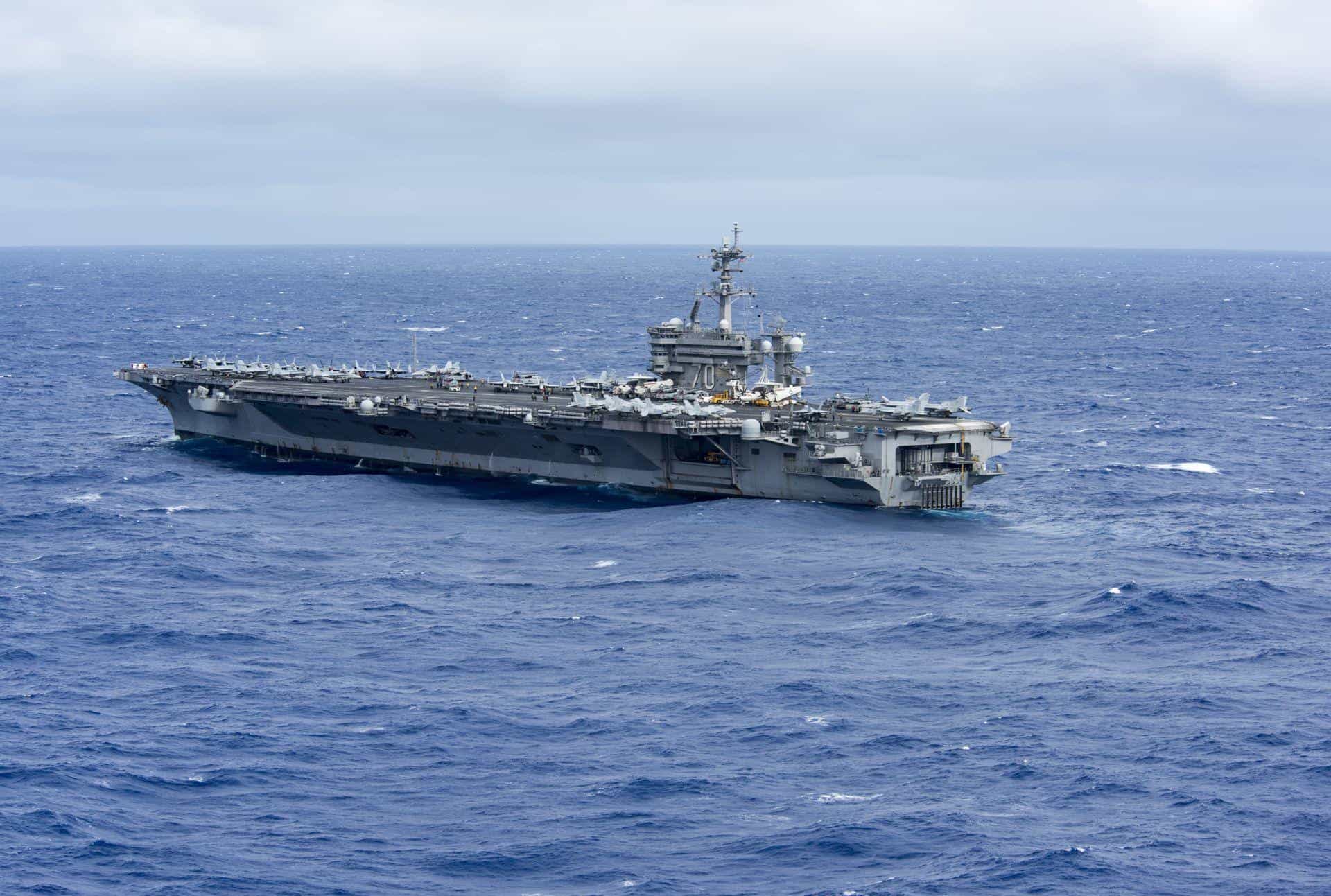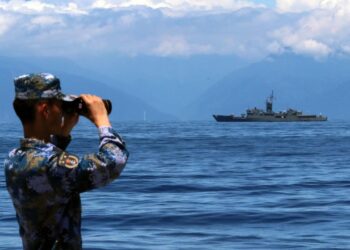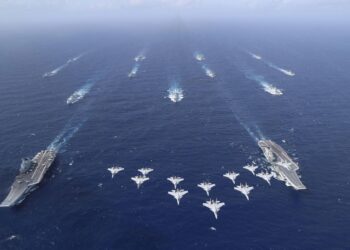According to US military and defense experts, the country’s navy needs a deep modernization in order to be able to counter the emerging threats and challenges. During a recent visit to United States Central Command in Florida, President Donald Trump said: “Our Navy is at a point almost as low as World War I. That’s a long time ago. It’s not going to happen anymore. Not with me.”
The capabilities of the US Navy have long been a matter of concern for Trump. His plan is to initiate a large-scale ship-building program and increase the numbers of ships employed by the US Navy from 272 to 350.
In recent weeks, at least three serious reports have been published, analyzing the prospects of the US Navy’s future. In January, the Center for Strategic and Budgetary Assessments (CSBA) published a study. On February 2, a report was unveiled by prominent Congressional specialist in naval affairs Ronald O’Rourke. Finally, on February 10, US Senator John McCain presented before Congress a study on an alternative navy.
New Challenges
In his paper, O’Rourke highlighted the ongoing modernization of China’s navy and Russia’s increasing maritime activities in the Mediterranean and the Atlantic as reasons behind the need to increase the number of US combat ships.
The expert also noted that Trump’s plan of 350 warships reflects repeated recommendations by the Pentagon in different reports since 1993. Thus, the goal of 350 warships would not be a shockingly significant addition to the US Navy.
According to O’Rourke, Russia and China are ready to take on the global order and in 15 years this will be the main concern for US military strategists.
The report stated that the US Navy should restore its Cold War-era capabilities of preventing any types of aggression and or immediately punishing the aggressor.
Currently, the Russian Navy is not capable of conducting long-range maritime operations. However, Russian warships and submarines are armed with cruise missiles. In addition, a new class of low-noise submarines are entering service.
As for China, the main threat could come from Chinese anti-ship missiles, its satellite surveillance system and a network of coast-based radars. In addition, Russia and China exports military technologies to such countries as Iran and North Korea, which are also regarded as a threat to US interests.
In turn, McCain’s report mentioned more than the possible threats emerging from Russia and China, stating that the US Navy should take into account three main factors, including increasing traffic on global maritime routes, the strategic importance of underwater cables and new technologies (3D printing, artificial intelligence, advanced materials etc.) having an impact on maritime activities.
Nevertheless, the study noted that all these factors could be used by Russia and China against US interests.
Another important factor is military spending. According to the report, an increased military budget alone is not the solution to future challenges.
Agility is Everything
According to US naval analysts, in the current global environment the US Navy needs to be capable of a rapid and solid response to any aggression by Russia, China or Iran.
The goal of the US’ naval modernization is to build a fleet capable of rapid offensive actions by 2030. In order to make that happen, the US needs a new concept of aerial and missile defense by the navy as well as new concepts of electronic and underwater warfare.
Another important matter is Washington’s capability to carry out independent maritime operations, without NATO’s involvement. Experts pointed out that NATO cannot deliver a rapid military response, thus, the US should be capable of carrying out a swift retaliatory attack against any threats.
Finally, there is the risk that the enemy could influence US allies or neutral countries so they would reject the deployment of US ground or naval forces on their territories. For example, Russia could pressure European nations and China its Asian neighbors.
According to experts, in the new less friendly environment the US Navy and US Marine Corps could remain the only mobile and autonomous tool for global projection of American military power.
Weapons of the Future
The CSBA recommended dividing the navy into two main groups: a deterrence force and a maneuver force. The first group should be bound to certain regions while the second one should operatively respond to challenges in the Pacific, in the Indian Ocean and in the Middle East. The first group should be aimed at deterring Russia and China while the second should be ready to provide assistance in any area of the world’s oceans.
The report also highlighted the importance of unmanned and telecommunications technologies for the future of maritime warfare.
McCain’s report called for an equal distribution of combat power among all warships and submarines within the navy. This conception also requires improved logistics and a higher level of autonomy.
The document also underscored the importance of carrier-based unmanned aircraft, surface and underwater drones as well as the use of high-energy and electromagnetic weapons.
The report recommended increasing the size of the fleet to 321 warships, 136 large and 183 medium-size surface and underwater drones by 2030.
Money is not a Problem
The CSBA recommended increasing the number of ships to 382 (including 42 patrol ships) as well as commissioning 40 large underwater and 40 surface drone ships. Such a fleet would require $23.6 billion a year (20 percent higher than in the initial plan). Operational costs would require additional $16.5 billion.
According to O’Rourke, existing industrial facilities are able to manufacture more ships and submarines.
Currently, money and production facilities are not the most important items on the agenda. What is more important is to choose the model of modernization and provide fast implementation of the plan.










